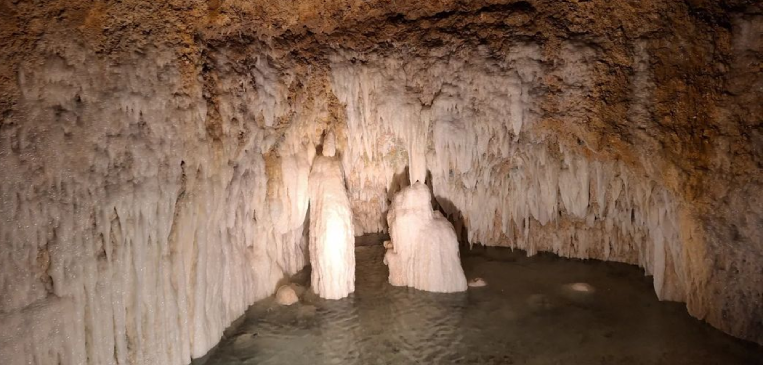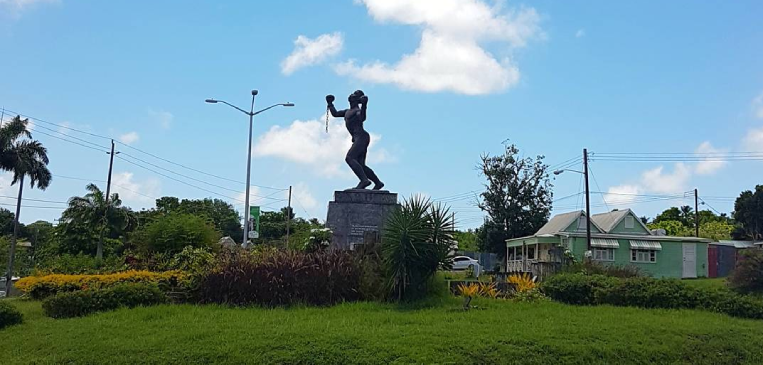If there’s one place that’s captivated my heart, it’s Saint Michael, Barbados. This gem of the Caribbean isn’t just another tropical paradise. It’s a vibrant, cultural hotspot that’s got it all – from historical landmarks to stunning beaches.
I’ve strolled down its bustling streets, soaked up the sun on its pristine beaches, and delved into its rich history. Every corner of Saint Michael is a testament to Barbados’ unique blend of cultures, and I can’t wait to share my experiences with you.
So, whether you’re a seasoned traveller looking for your next adventure, or just curious about this Caribbean wonder, you’re in for a treat. Let’s explore the magic of Saint Michael, Barbados together.
The History of Saint Michael, Barbados
Having walked its bustling streets and basked under its tropical sun, it’s impossible not to appreciate the journey that has shaped Saint Michael, Barbados.
The country’s capital, Bridgetown, falls within the boundaries of Saint Michael, Barbados. Established by the English settler William Courteen in 1628, Bridgetown rapidly became a bustling port city for sugar cane plantations. It’s now recognised as a UNESCO World Heritage Site, with its rich history playing a vital role in the birth of Barbadian culture.
Saint Michael has been through highs and lows. During the 17th and 18th centuries, it benefited from the sugar boom. Pioneering techniques in cane processing and rum distillation were introduced, boosting its economy. Yet, it also has a darker past linked to the unfortunate era of slavery, which significantly impacted its history.
Here, I’ve compiled some data to illustrate Saint Michael’s historical milestones:
| Year | Event |
|---|---|
| 1628 | English settler William Courteen establishes Bridgetown |
| 17th-18th Century | Sugar boom |
| 1807 | Abolition of Slave Trade |
| 1966 | Barbados achieves independence from British rule |
| 2011 | Bridgetown and its Garrison named a UNESCO World Heritage Site |
Laying bare these historical truths is important – they help us remember and acknowledge the community’s past and the journeys taken by the people here.
Looking to the future, it’s clear that Saint Michael is a symbol of resilience, having weathered trials and tribulations through the centuries. From a bustling sugar economy to the waves made by the banishment of slavery, it continues to inspire through its story and its perseverance. Expect more as we venture deeper into this enchanting location. All this historical knowledge only ignites an eagerness for more tales from Saint Michael, Barbados.
Exploring the Landmarks of Saint Michael
Stepping into the heart of Saint Michael, I am immediately overwhelmed by the architectural splendour around me. Here, the past meets the present in a harmonious blend of vibrant culture and historic touchstones. There’s more to this place than just being a bustling port city for sugar cane plantations. It’s loaded with a handful of exceptional landmarks, each narrating a unique story. Let’s plunge into a journey of exploration and discovery.
Foremost among the landmarks that caught my attention as I strolled down the streets of Bridgetown was the Harrison’s Cave. It’s a crystallised lime cave discovered in the early 18th century. The cave, boasting streams, cascading waterfalls, cool chambers and deep pools, has fascinated locals and tourists alike.
Another unmissable gem of Saint Michael is the Barbados Museum and Historical Society. The museum, housed in the former British military prison, offers an insightful portrayal of the country’s past. The gallery showcases the continuity of Barbados from its prehistoric times to independence.
The heart of Bridgetown pulses at the National Heroes Square, formerly known as Trafalgar Square. This site houses a statue of Vice Admiral Lord Horatio Nelson, a bronze dolphin fountain, and a cenotaph.
Let me take a minute to highlight the Saint Michael’s Cathedral, an Anglican church whose construction dates back to the mid-1660s. It survived a hurricane and saw redevelopment in the 1780s into a beautiful Gothic-style structure. Today, with an impressive tower, it’s a loved symbol of the city’s endurance and spirit.
Next in line we find the George Washington House, a significant stop on the George Washington heritage trail. The future first US president lived in this plantation house in 1751.
Finally, there’s no way I could forget about Kensington Oval, the hallowed ground for cricket lovers. With its rich sporting history, it attracts thousands of fans for every international cricket match held here.
I could spend hours recounting the exceptional features of these landmarks. Truly, the landmarks in Saint Michael serve not just as prized relics of an extraordinary past but also as way-markers lighting the path towards future journeys and explorations.
The Best Beaches in Saint Michael
If you’re anything like me, your vision of a Caribbean paradise isn’t complete without a mental image of breathtaking, sandy beaches. You’ll be thrilled to find out that Saint Michael, Barbados, has plenty. Some of these include the Browns Beach, Pebbles Beach, Brandon’s Beach, and Batts Rock Beach.
Located fairly centrally, Browns Beach has one of the longest stretches of sand located in the Carlisle Bay area. Bathing here often feels like stepping into a warm bath – the water temperatures are near perfect. Plus, there’s ample space for you to spread out and soak in some sun.
Now I couldn’t discuss beaches in Saint Michael without mention of Pebbles Beach. Popular among locals and tourists alike, this beach offers calm, turquoise waters perfect for swimming or snorkelling. It’s not uncommon to spot turtles in these waters. If you’re lucky, you might get to share your swim with these gentle creatures.
Moving further westwards, you’ll locate Brandon’s Beach. This hidden gem has less tourist footfall compared to the others, providing you with peaceful seclusion. If you’re one to appreciate quiet and solitude, this beach will be right up your alley.
Finally, Batts Rock Beach is another arrow in Saint Michael’s quiver of beaches. With its vast stretches of white sand and clear Caribbean waters, it’s more than just visually appealing. The beach has picnic benches and shower facilities, and it’s nestled amidst a backdrop of palm trees. It’s perfect for family outings.
But with Saint Michael having a stretch of coastline that extends up to 16 miles, there are bound to be more beaches waiting to be explored. Beachscape beauty isn’t scarce in the parish of Saint Michael. You’re always a stone’s throw away from the next panoramic seascape. Let’s embark on the journey of unearthing these sun-soaked treasures.
Immersing Yourself in the Culture of Saint Michael
Saint Michael isn’t just about the beaches and wonderful landmarks. It also has a beguiling, vibrant culture where the past and present coexist – a cultural hotspot that captures the imagination at every turn. One of the best ways to immerse yourself in this rich culture is to visit the community’s frequent bustling markets.
Cheapside Market, an active hive of locals and tourists alike, is a popular spot. It comes alive particularly on Saturdays, offering an in-depth taste of the island life. Local vendors sell everything from fresh produce to handmade crafts and clothes. Hearing the Bajan dialect, full of warmth and rhythm, adds authenticity to the environment.
For foodies, there’s a lot more in store. Bajan cuisine is a flavourful blend of African, Indian, Irish, Creole and British influences. Traditional dishes like Cou-Cou and Flying Fish, the national dish of Barbados, should top your must-try list. Other delicacies like the fish cutter, Bajan macaroni pie, rice and peas, and pudding and souse would stir your taste buds into a dance. It’s safe to say that the Bajan culinary experience is a gastronomic revelation.
Moreover, visiting during the Crop Over festival offers an unparalleled look at the cultural depths of Saint Michael. This event, which runs from June to August, is a grand celebration marking the end of the sugar cane season. Live music, flamboyant costumes, the Calypso competition and the grand finale – the Kadooment Day Parade – make it an unforgettable affair.
Saint Michael is also known for its potent rum culture. Touring the Mount Gay Distilleries gives you insights into the making of the world’s oldest rum and its deeply ingrained cultural significance.
Immersing in the local culture is an excellent way to understand what makes Saint Michael unique. It’s more than just sightseeing – You’re engaging, learning and experiencing the pulse of this vibrant community firsthand. It’s a deeply transformative journey that gives new perspectives and enriches your overall travel experience.
Delving into the Cuisine of Saint Michael
When I first bit into a cutting cake, a traditional Bajan pastry, it was as if I’d tasted the spirit of Saint Michael. You can’t explore the culture of a location without tapping into its culinary scene, what with the depth of flavours, history, and diversity it brings. But I’ll assure you, the gastronomical journey in Saint Michael is extraordinary.
Food stalls are a staple throughout the parish, warmly inviting locals and tourists alike with the aroma of bajan seasoning, fresh seafood, and island spices. From the local delicacies at bustling roadside vendors to fine dining in upscale restaurants, every meal felt like a new adventure revealing more about the Bajan culture.
No food tour in Saint Michael, however, is complete without trying the national dish – Coucou and Flying Fish. It’s rich with the taste of cornmeal, okra, and Bajan seasoning, paired with a mouth-watering sauce of stewed flying fish. You haven’t truly experienced Saint Michael until this delightful combination graces your palate.
And let’s not forget the mark-rum shops dotted around the parish, serving bottles of Barbados’ finest nectar. The fiery spirit traces back centuries in the country’s history and continues to be a significant element of local gatherings. Sipping on rum, enjoying fish cutters, and soaking in the island vibe – there’s a pleasant slice of Bajan life.
Entering the realm of Bajan street food, fish cakes and macaroni pies are real crowd-pleasers. Furthermore, Pudding and Souse, a unique dish of pickled pork served with sweet potato pudding, often leaves many tourists surprised and hooked on its contrasting flavours!
Taking a bite out of Saint Michael is truly a journey through time – it’s an intimate introduction to its history, its people, and its heritage. So, prepare yourself for this culinary adventure, one that’s as vibrant and varied as Saint Michael itself.
It’s not just a food trip; it’s about touching upon the soulful underlying stories of the parish. It creates a beautiful tapestry of experience that’s woven into the very cultural fabric of Saint Michael.
Conclusion
So there you have it. From the captivating history to the stunning beaches and landmarks, Saint Michael has it all. But it’s the vibrant culture that truly sets this Barbadian parish apart. Whether it’s the bustling markets, the lively Crop Over festival, or the rich rum culture, there’s always something to immerse yourself in. And let’s not forget the Bajan cuisine. From the national dish of Coucou and Flying Fish to the street food staples like fish cakes and macaroni pies, the culinary scene is a journey in itself. It’s not just about tasting the food, it’s about experiencing the stories behind them. So if you’re looking for a travel experience that’s rich in culture and history, Saint Michael, Barbados should be at the top of your list. It’s not just a destination, it’s a journey through time and culture that will leave you enriched and inspired.



